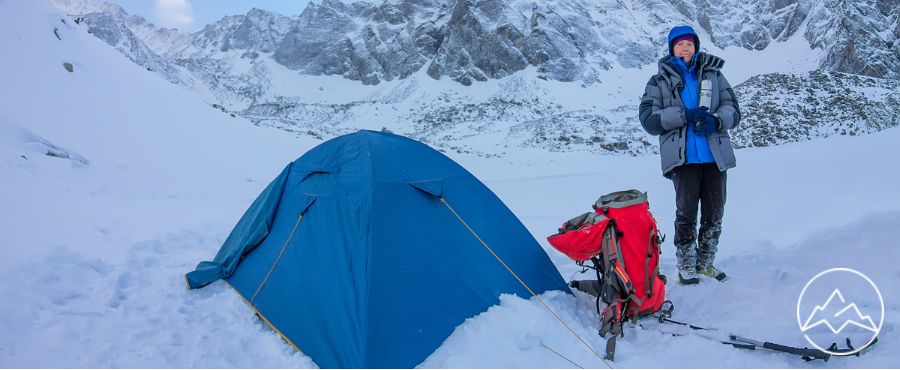Winter camping isn’t just for hardcore outdoorsmen. With the proper equipment and planning, winter camping allows campers to get outside in the sun when the body needs it most. Besides, when else will you have the opportunity to sleep in a snow cave?
Whether you are snow camping or just doing some cold weather camping, proper planning is critical. Exposing your body to subzero temperatures without the proper clothing or shelter can result in serious injury – or death.
Below are some winter camping tips to ensure you and your party can enjoy the outdoors while remaining safe and comfortable.
Plan your winter camping trip
Before you head out into the snowy wilderness, a proper plan is essential. When creating a plan, be sure to keep these general rules in mind:
- Always inform someone where you and your party intend to go, when you are leaving, and when you are going to return.
- Never camp alone. If you break a limb or encounter an animal, your chances of survival in the winter are much, much lower.
- Plan an alternate route. If you are following a trail, be aware of every access point in case the path is impassable.
- Bring a compass and map – and know how to use them. Technology fails, particularly in cold weather. A compass and map can tell you where you are and where you need to go for safety – and they don’t require batteries.
If you plan on camping in a National Park, recreation area, or wilderness, check with local authorities to inform them of your plan. They will have useful information on weather and trail conditions. Some areas also require campers to check in and out when camping or risk a fine.
Bring appropriate gear
Winter camping is one time when it pays to have the right gear. Staying dry is the most important aspect of winter camping. Dry clothes are paramount to helping the body retain warmth while keeping frostbite and hypothermia at bay.
Here are several pieces of equipment you cannot go without when winter camping:
- A properly rated sleeping bag
- Sleeping pad
- Complete change of clothes, particularly socks and thermal underwear
- Map/compass
- Fuel and stove
- Light – preferably a headlamp
Sleeping bags rate by temperature. The lower the rating, the more comfortable you will be in colder weather. For instance, a sleeping bag with a rating of 20°F will keep you warmer than one rated 32°F.
Also, having a sleeping pad in your tent will keep your body warmth from escaping too rapidly into the frozen earth. A headlamp is also crucial – remember, it gets dark faster in the winter.
Lastly, your clothing is important. You need clothes that will keep wind and water out, but let your body breathe. Fabrics such as Gortex, or natural fiber wool brands such as Icebreaker, are good for layering.
Keeping safe in the backcountry
Once you are out on your camping trip, there are a few basic guidelines to consider.
- Bring plenty of food and water
- Plan your stops and sleeping areas ahead of time
- Do not attempt to travel in bad weather
- Avoid traveling over frozen water or traversing ice or snow “bridges”
- Make sure your snow shelter has proper ventilation
Bringing enough food is obvious. However, many winter campers overlook the need for water. Simply relying on melting snow is not a good idea. It wastes your fuel supply and can be quite dirty. Bringing a supply of fresh water to start is a good idea, then finding a water source and using a filter or tablets will help you more efficiently manage your water.
Also, dehydration during winter camping is real. The cold can often mask symptoms, leading to fatigue, nausea, and other issues that can lead to injury or death while camping.
Campers should avoid frozen water at all costs. Even when camping at high latitudes, frozen bodies of water can be subject to currents and fissures that result in gaps in the ice or open water. Many frozen lakes have layers of slush year-round, causing soggy boots and furthering the risk of frostbite in feet and toes.
Handy tips for enjoying winter camping
Winter camping is fun, but the cold, wind, and moisture can make life difficult for even the most seasoned campers. Here are some tips to ensure you enjoy your winter camping experience:
- Keep your Firestarter dry, and dig a hole for maximizing the likelihood of starting and keeping the fire going.
- Keep your spare clothes at the bottom of the sleeping bag. The next morning, they will be warm when you put them on.
- Before going to bed, fill your water bottle with boiling, or really hot, water. Then, put it at the foot of your sleeping bag wrapped with a shirt.
- Bring easy-to-cook food. You don’t want to be chopping fresh veggies in sub-zero temperatures. Freeze-dried meals are easy to prepare and pack lightly.



